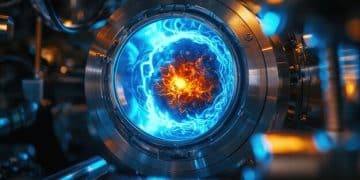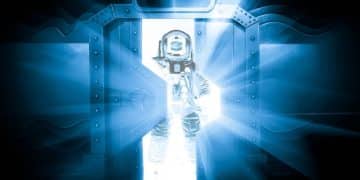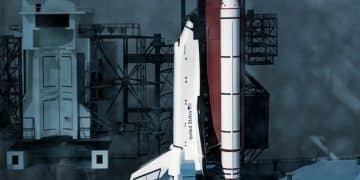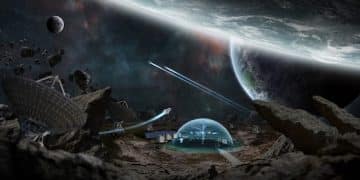Reducing Mars Travel Time: Propulsion Tech Advancements by 2035
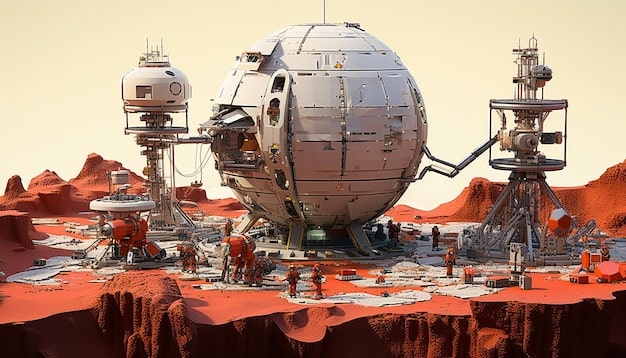
What are the latest advancements in propulsion technology that could reduce travel time to Mars by 50% by 2035? Innovations such as nuclear thermal propulsion, advanced ion drives, and fusion propulsion systems hold the promise of significantly decreasing the duration of interplanetary voyages, making Mars missions faster and more feasible.
The dream of reaching Mars has captivated humanity for decades, but the journey remains a daunting challenge primarily due to the vast distances involved. The immense travel time not only increases the risk to astronauts’ health and safety but also significantly raises the mission’s cost. What are the latest advancements in propulsion technology that could reduce travel time to Mars by 50% by 2035?
Currently, conventional chemical rockets would require approximately six to nine months to reach the red planet. By exploring innovative technologies, we aim to cut this time in half. As you read on, you’ll gain insights into potential solutions that will shape future space exploration.
What are the latest advancements in propulsion technology that could reduce travel time to Mars by 50% by 2035?
The quest to significantly reduce travel time to Mars hinges on breakthroughs in propulsion technology. Traditional chemical rockets, while reliable, offer limited efficiency for long-duration interplanetary missions. The advancements we’re focused on promise drastically improved performance, setting the stage for faster and more practical Mars expeditions.
Nuclear Thermal Propulsion (NTP)
Nuclear Thermal Propulsion (NTP) systems utilize a nuclear reactor to heat a propellant, typically hydrogen, to extremely high temperatures. This superheated propellant is then expelled through a nozzle, generating thrust. Here’s what makes NTP compelling:
- Higher Efficiency : NTP offers a specific impulse (a measure of engine efficiency) that is roughly two to three times greater than that of chemical rockets.
- Reduced Travel Time : This higher exhaust velocity translates to significantly reduced travel times to Mars, potentially cutting the journey to just three to four months.
- Challenges : The main challenges include the development of reactors that are both lightweight and capable of withstanding extreme temperatures, as well as addressing safety concerns related to potential radioactive contamination.
Extensive research and development are underway to overcome these hurdles. Recent advancements in materials science and reactor design could pave the way for safe and efficient NTP systems that would revolutionize interplanetary travel. There is no doubt what are the latest advancements in propulsion technology that could reduce travel time to Mars by 50% by 2035 and NTP is one on top.
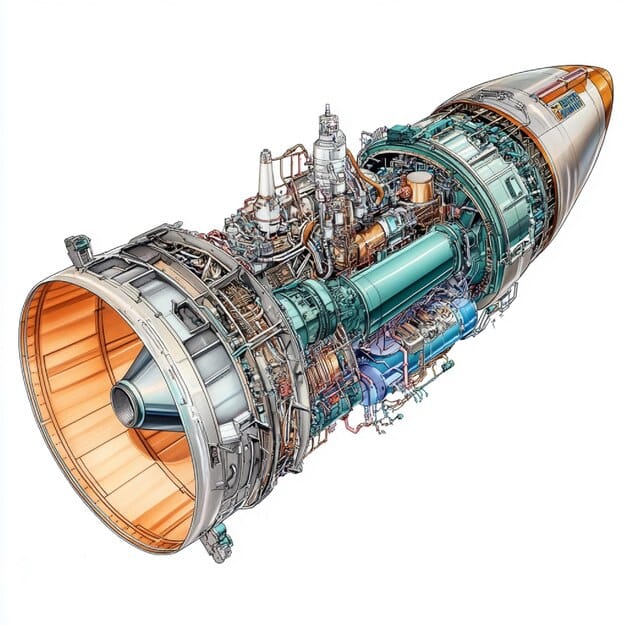
Advanced Ion Propulsion
Ion propulsion systems use electric fields to accelerate ions, creating thrust. While they produce very low thrust compared to chemical rockets, they offer exceptionally high specific impulse, making them ideal for long-duration missions. Here are the key aspects:
- High Specific Impulse : Can achieve specific impulse values ten times greater than chemical rockets.
- Continuous Thrust : Ion drives provide a gentle but continuous push, gradually accelerating a spacecraft to tremendous speeds over long periods.
- Advanced Variants : Research focuses on enhancing ion source efficiency, developing lighter and more powerful power processing units, and exploring alternative propellants.
Next-generation ion drives could be significantly more powerful and efficient, potentially shrinking the Mars transit time to around four to five months. Continuous improvements are vital in the pursuit of what are the latest advancements in propulsion technology that could reduce travel time to Mars by 50% by 2035.
In conclusion, NTP enables high thrust utilizing nuclear reactors to heat propellant while ion propulsion uses electric fields to thrust ions. Using these cutting edge innovations helps in achieving shorter travel times.
Fusion Propulsion: A Distant but Promising Frontier
Fusion propulsion represents a more futuristic approach, drawing power from nuclear fusion reactions. By harnessing the immense energy released when light atomic nuclei fuse together, such a propulsion system promises very high exhaust velocities and potentially game-changing mission capabilities.
The Potential of Fusion
Fusion propulsion offers the tantalizing prospect of:
- Very High Exhaust Velocities : Resulting in faster transit times and greater payload capacity.
- Abundant Fuel : Fusion could utilize fuels derived from readily available sources, such as deuterium and helium-3.
- Technical Challenges : Overcoming the immense technical challenges associated with achieving sustained nuclear fusion, particularly in a compact and lightweight propulsion system is a crucial step for achieving space expedition goals.
While fusion propulsion remains in the early stages of development, ongoing research into fusion reactors and plasma confinement methods holds promise for future breakthroughs. Achieving sustained nuclear fusion might become possible within the next decades and is definitely a focus point to discuss what are the latest advancements in propulsion technology that could reduce travel time to Mars by 50% by 2035.
Magneto-inertial Fusion (MIF)
One promising approach is magneto-inertial fusion (MIF), which combines magnetic confinement, as in traditional fusion reactors, with inertial confinement, where fuel is compressed to extreme densities. The MIF offers more manageable conditions than pure inertial fusion and better confinement than pure magnetic fusion which is helpful in improving space travel and fuel.
To conclude, fusion propulsion offers great improvements as compared to existing means. Though tough, consistent research can help in achieving success.
Material Science and Engineering: Enabling Propulsion Technologies
Advancements in propulsion technology are intertwined with progress in material science and engineering which enables these propulsion technologies to be more advanced and efficient. We’ll explore how novel materials are pivotal in realizing the full potential of advanced propulsion systems.
High-Temperature Materials
Many advanced propulsion concepts, such as NTP and fusion propulsion, demand materials that can withstand incredibly high temperatures and extreme conditions. The key advancements around this are:
- Ceramic Matrix Composites (CMCs) : Show immense high temperature strength without significant expansion and have a low density for use in spacecraft and other appliances.
- Refractory Alloys : Alloys based on materials like niobium, molybdenum, and tungsten are being explored for their ability to maintain strength at elevated temperatures.
- Coatings and Thermal Barriers : Also used to reduce heat damage to equipment, coatings and barriers increase efficiency.
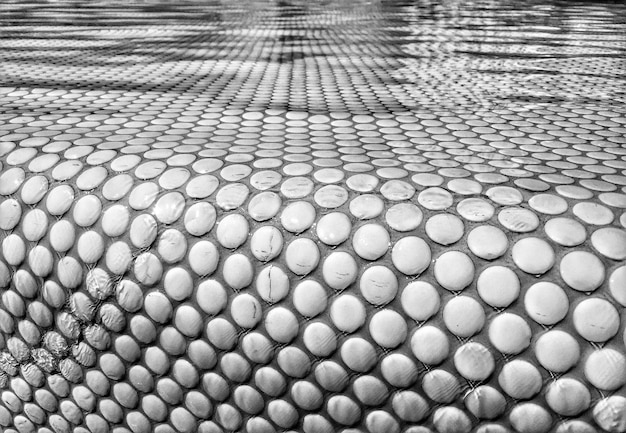
Lightweight Structures
Minimizing the weight of propulsion systems is crucial for maximizing spacecraft performance. Recent progress in lightweight construction are:
- Carbon Fiber Composites : Carbon fiber composites are increasingly used in spacecraft structures due to their high strength-to-weight ratio.
- Additive Manufacturing : Additive manufacturing, or 3D printing, offers the potential to create complex and optimized structures with minimal material waste.
- Topology Optimization : Advanced computational methods are enabling engineers to design structures that maximize strength while minimizing weight.
Material science is continuously evolving as new materials are created with improved functionality, with a focus on reducing what are the latest advancements in propulsion technology that could reduce travel time to Mars by 50% by 2035.
New material and technological creation helps in easier and more material friendly construction of equipment.
The Role of Artificial Intelligence and Automation
Artificial Intelligence (AI) and automation are playing an increasing role in the development and operation of advanced propulsion systems. Various aspects of design, testing, and mission management greatly rely on it.
Automated Design and Optimization
AI algorithms can assist in:
- Propulsion System Design : AI can rapidly explore a vast design space, identifying optimal configurations and parameters for advanced propulsion systems.
- Predictive Maintenance : AI-powered predictive maintenance systems could monitor the health of propulsion system components, anticipating potential failures and scheduling maintenance proactively.
- Autonomous Operation : AI systems could enable spacecraft to operate autonomously, adjusting propulsion system parameters in response to changing conditions and optimizing mission performance.
AI and Space Trajectory
AI can also optimize space trajectory which affects travel time:
- Real-Time Adaptation AI algorithms can process vast amounts of data in real-time to adapt the spacecraft’s trajectory based on new information.
- Fuel Consumption AI can assist with precise maneuvers for interplanetary transfers, optimizing fuel consumption and reducing the overall mission duration.
- Risk Mitigation AI algorithms can identify and mitigate trajectory-related risks.
The integration of AI and automation has great potential in the creation of modern technology used for reducing what are the latest advancements in propulsion technology that could reduce travel time to Mars by 50% by 2035.
AI integration helps in design and optimization of the space trajectory. The AI algorithms help in adapting to changes and mitigating risks.
Ground Testing and Validation: Ensuring Reliability
Before deployment, advanced propulsion systems undergo extensive ground testing and validation to ensure their reliability and performance. Space is a dangerous place and hence there must be certainty of equipment safety for which validation is run.
Simulating Space Conditions
Specialized facilities are used to simulate the harsh conditions of space:
- Vacuum Chambers : Large vacuum chambers replicate the vacuum of space, allowing engineers to test propulsion systems in an environment.
- Thermal Testing : Systems are subjected to extreme temperature gradients to assess their ability to withstand the temperature fluctuations encountered in space.
- Radiation Testing : Propulsion systems must be shielded against radiation in space, hence this testing checks if the shielding works.
Flight Testing
Flight represents the ultimate validation:
- Suborbital Flights : Testing on short suborbital flights before long spaceflights helps validate technology by checking its performance.
- Orbital Demonstrations : Performing full scale demonstration on technology around space lets real scenarios be understood before longer travel.
- Data Collection : All kinds of data is collected to check for improvements and changes that can be made.
Rigorous testing will be crucial for ensuring the success of future Mars missions. Thorough testing helps in assessing what are the latest advancements in propulsion technology that could reduce travel time to Mars by 50% by 2035 as well.
Ground and flight testing are vital for validating the new technology to make sure the future mars mission goes off without any hiccups.
| Key Point | Brief Description |
|---|---|
| 🚀 NTP | Uses a nuclear reactor to heat and expel propellant, offering significantly higher efficiency. |
| ⚡ Ion Propulsion | Accelerates ions using electric fields, ideal for long-duration missions. |
| ⚛️ Fusion Propulsion | Harnesses the energy of nuclear fusion for very high exhaust velocities. |
| 🛡️ Material Science | New materials enabling extreme conditions for fusion propulsion. |
Frequently Asked Questions
Nuclear Thermal Propulsion (NTP) uses a nuclear reactor to heat a propellant, typically hydrogen, offering two to three times the efficiency of chemical rockets. This higher efficiency significantly reduces travel time to Mars.
Ion propulsion systems use electric fields to accelerate ions, creating thrust. While the thrust is low, the specific impulse is exceptionally high, making it ideal for long-duration missions with continuous acceleration.
The major challenges include achieving sustained nuclear fusion in a compact and lightweight system. This requires overcoming immense technical hurdles related to plasma confinement, high temperatures, and fuel management.
Material science provides critical advancements, enabling advanced propulsion systems to withstand extreme temperatures and harsh conditions. Developments in high-temperature materials and lightweight structures are key.
AI and automation are used in propulsion system design, predictive maintenance, and autonomous operation. They optimize design configurations, anticipate failures, and enable spacecraft to adapt to changing conditions, improving overall performance.
Conclusion
The journey to Mars is a testament to human ambition and innovation. The advancements discussed, from nuclear thermal propulsion to fusion and AI-driven design, represent bold steps towards reducing travel time and enhancing mission feasibility. These innovations will shape what are the latest advancements in propulsion technology that could reduce travel time to Mars by 50% by 2035.
The combination of technological breakthroughs and rigorous testing will pave the way for faster, safer, and more sustainable interplanetary travel, bringing us closer to our Martian dreams.
